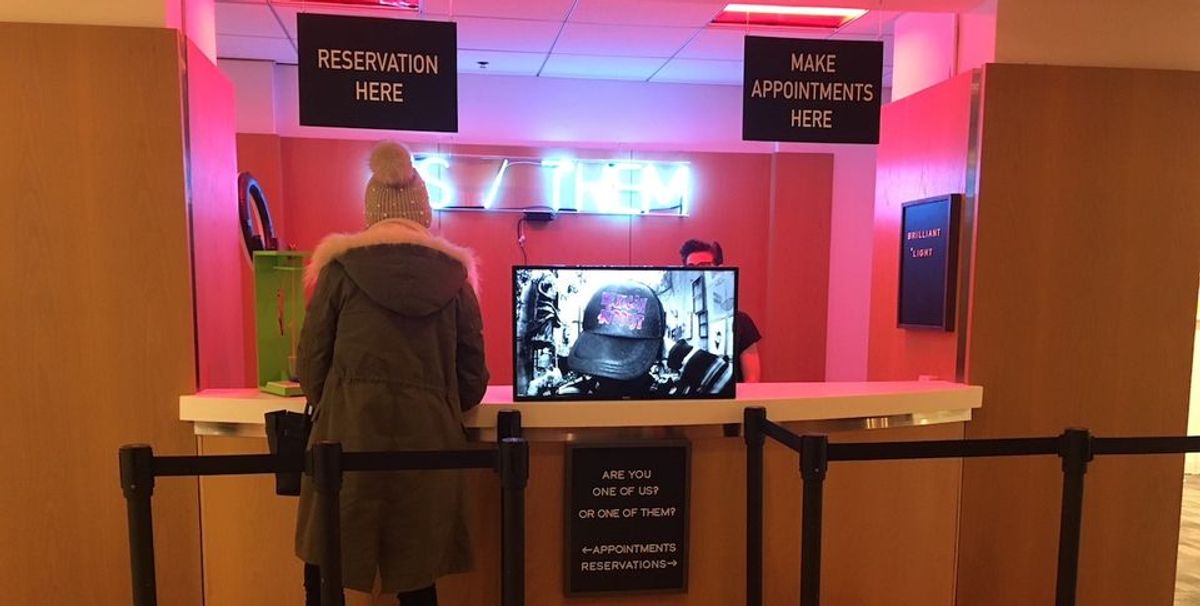New York's Spring/Break Art Show, on view through 11 March, brings together more than 80 exhibitors from seven cities for its eighth edition. Though smaller in size than its previous iterations, and housed for the first time at the at the United Nations Plaza in Midtown overlooking the Trump Tower, the curtator-driven fair packs a compact but potent political punch. This year is centred on the theme “fact or fiction”, a theme that the founder Andrew Gori says continues to be relevant given recent events that call into question one version of reality versus another. He cites the high-profile and contested case of Jessie Smollet, the publicly scrutinised actor who was arrested last month in Chicago and charged with disorderly conduct for filing a false police report for a hate crime he allegedly staged against himself in January. Gori says the fair is not “exclusively political, but extends to ideas around how perception and memory can become abstracted over time”. Here are our picks of some of some of the more politically nuanced—but still memorable—works at this year's fair.
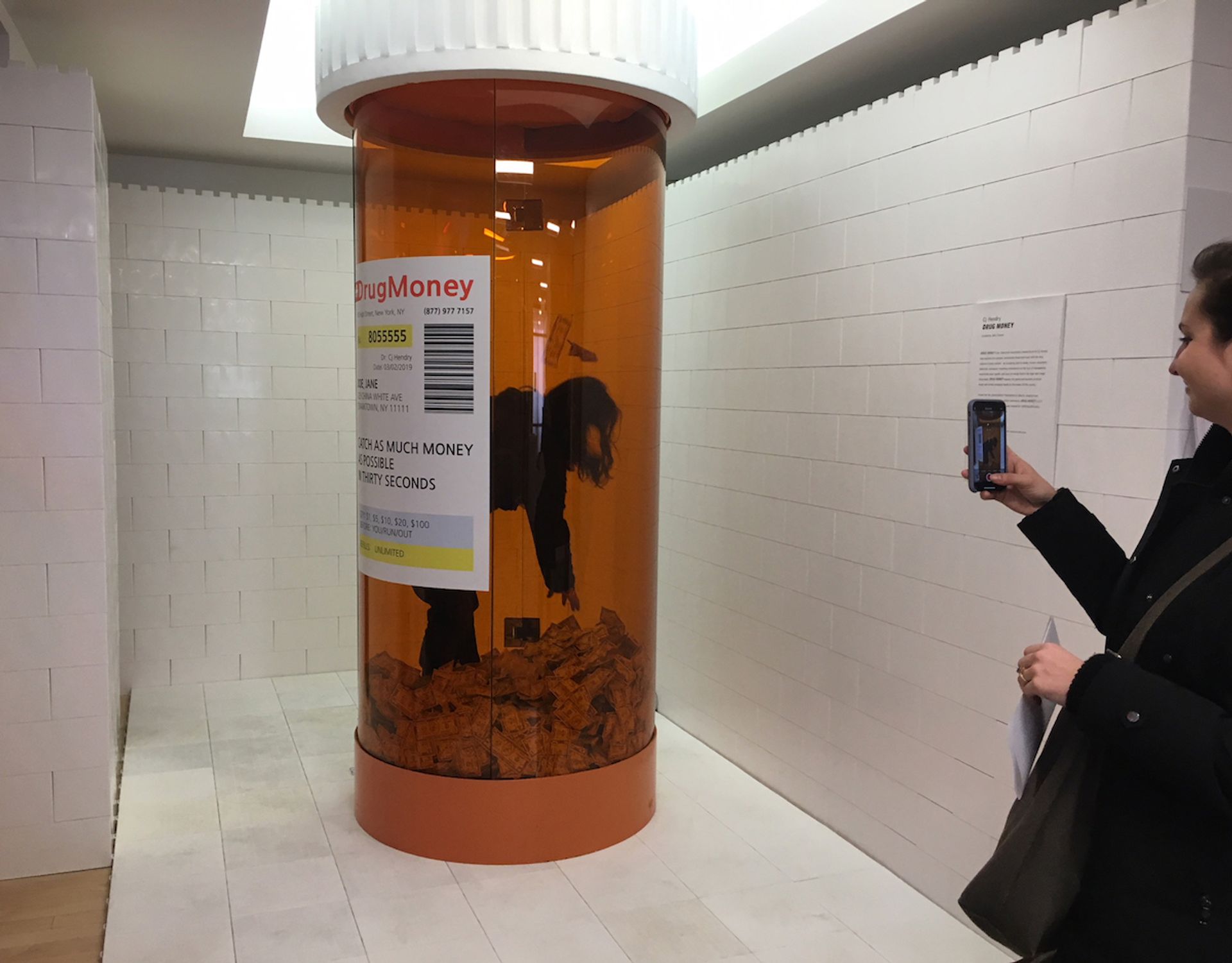
Reflecting the speed and scale of the opioid crisis in the US, this dystopian money booth invites visitors to step inside and try to grab as many banknotes as possible within 30 seconds. The Brooklyn-based Australian artist, best-known for works of a lighter vein such as photorealistic fashion drawings, is pals with Joss Sackler, the wife of the Oxycontin heir David Sackler. Ahead of debuting the steel and glass work at the fair, the artist wrote that she spoke to Sackler and appreciated her perspective on the recent controversies around the Sackler’s funding of cultural institutions. Hendry hopes the piece, priced at $120,000, will bring about more conversations around the legal and illegal market for addictive pharmaceuticals. CJ Hendry: Drug Money, curated by John Zionos.
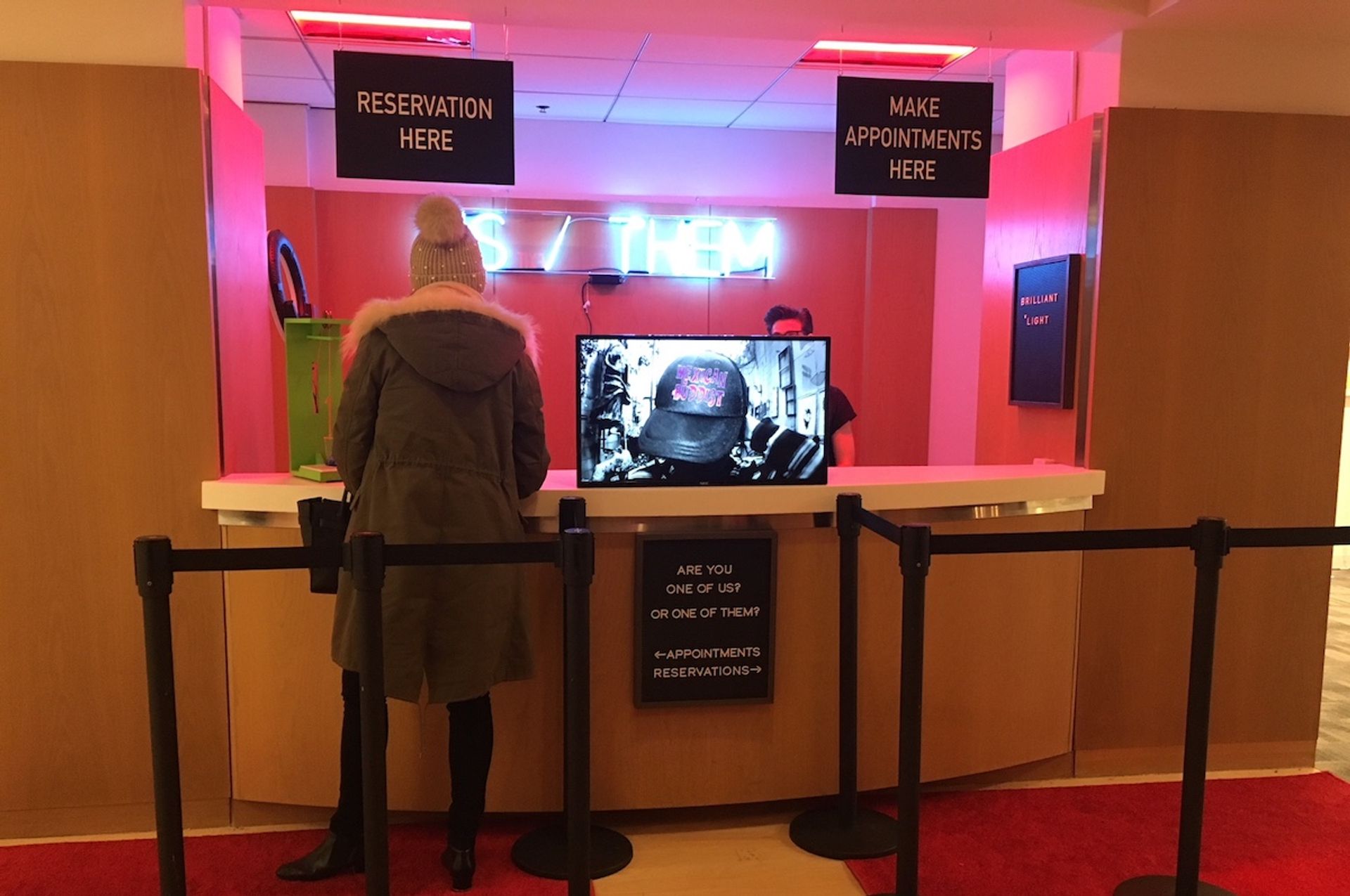
In this interactive performance, the American artist Jonathan Paul swings a pendulum to determine whether each participant as “one of us” or “one of them”, a reference to the science fiction film Brazil by Terry Gilliam. Partakers walk away with their designation printed on a lanyard bearing their photograph and a description of what the nomination means. Those who are "one of us", “seek conversations with those who don’t echo your beliefs in order to flex your mind”, among other desirable traits. The artist says he was “feeling as polarised as the rest of the world has been for the last couple years”. He adds: “Randomly selected differences pit us against each other at birth, and this performance was an honest way to process what has been happening in recent years”. Jonathan Paul's performance Us/Them, 2019.
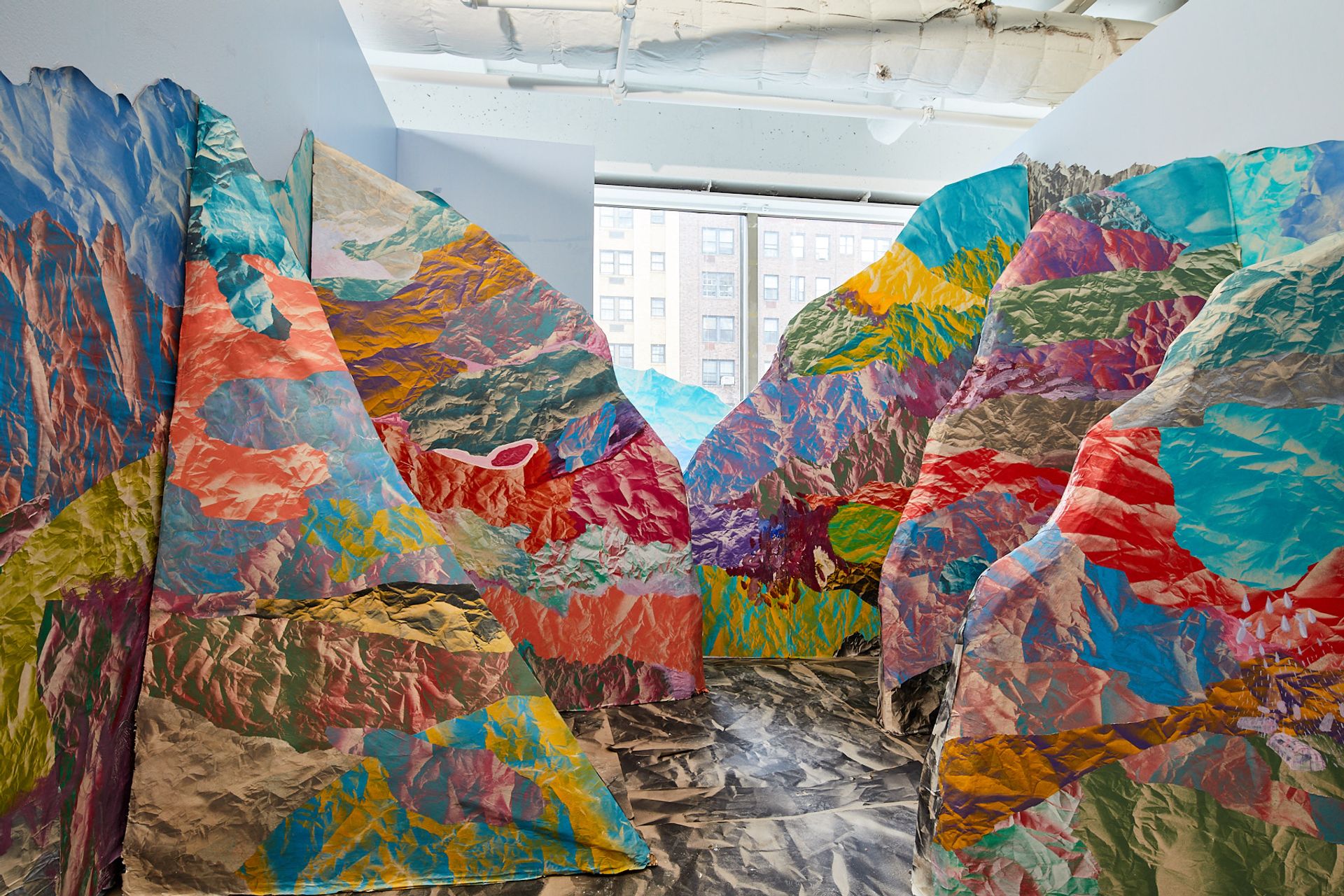
Pajtim Osmanaj, a Kosovo-born artist who came to the US in 2013, based this vivid installation on his experience as a political refugee when he was eight years old. As the artist travelled to Montenegro on foot in the late 1990s, he had a “child-like perspective of the excursion, thinking it was this fun trip that he and his family were going on—like a crazy camping trip”, says the curator, Sarah Sunjean Han. “A lot of people know what happened in Kosovo around that time but it doesn’t settle in as a real experience that people alive now have lived through, and that others continue to live through”. The textured mixed-media sculptures “create a little bit of a trompe-l'œil but can also remind you of Japanese woodblock prints”, says Han. The individual pieces are priced at around $5,000, with flat framed pieces (not shown at the booth) starting at around $1,500. Pajtim Osmanaj, curated by Sarah Sunjean Han. Photo: Samuel Morgan Photography
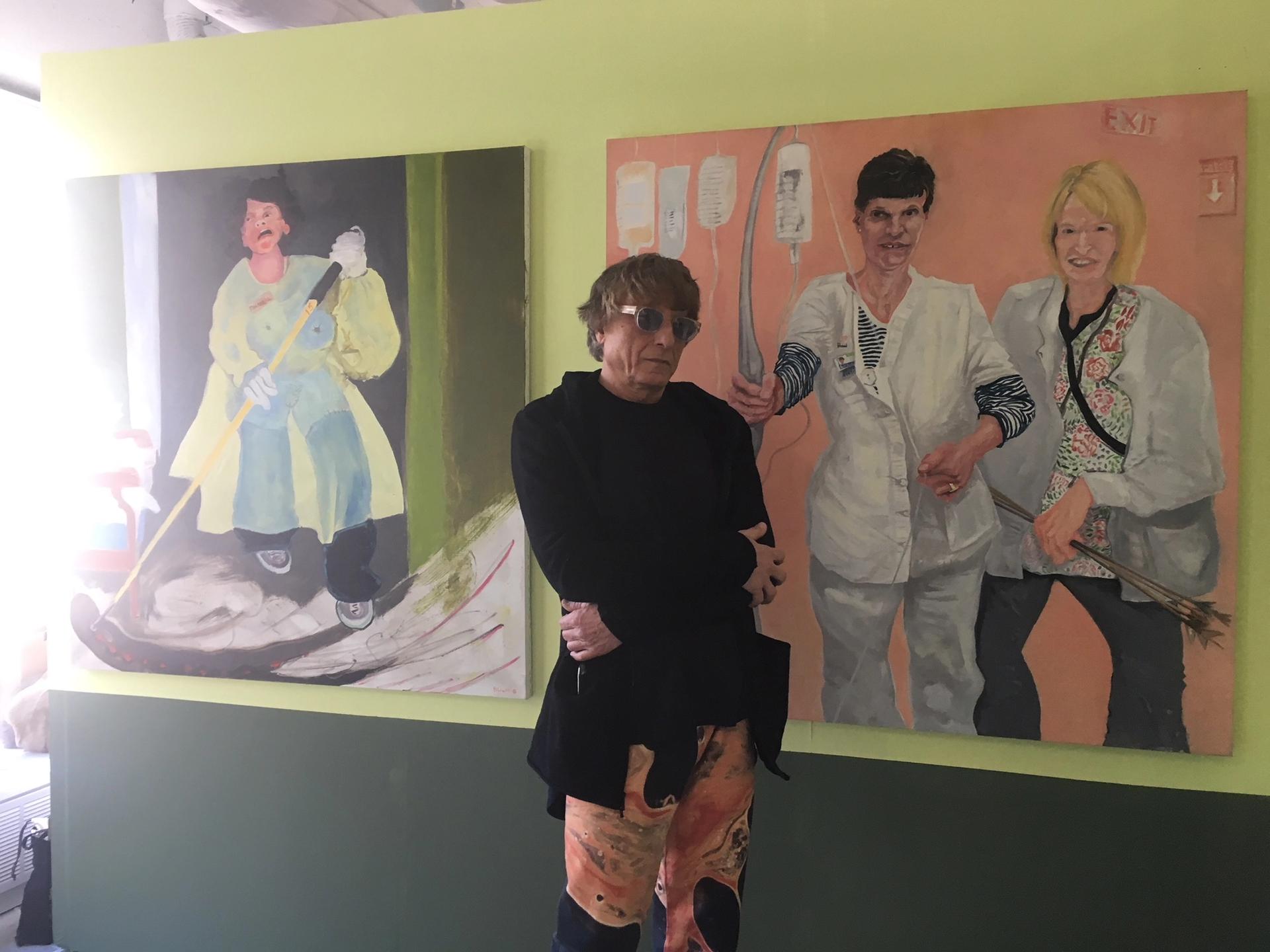
The series of six large-scale oil paintings, brought together by the “Piss Christ” artist Andres Serrano, is titled after the psychiatric centre Pilgrim State Hospital in Brentwood, New York, which was known as the largest and most populated hospital of its kind at its peak in the 1950s. Taking the point of the view of the patient, the artist imagines both the beautiful and menacing hallucinatory environments and caregivers that existed within the hospital’s microcosm. The series reflects on the thin veil between sanity and insanity and “can also be seen as a reflection on our political state right now, which is all made up of lunatics”, says the artist. The works range from $3,500 to $9,000. Jeff Bliumis with his work Pilgrim State, curated by Andres Serrano.
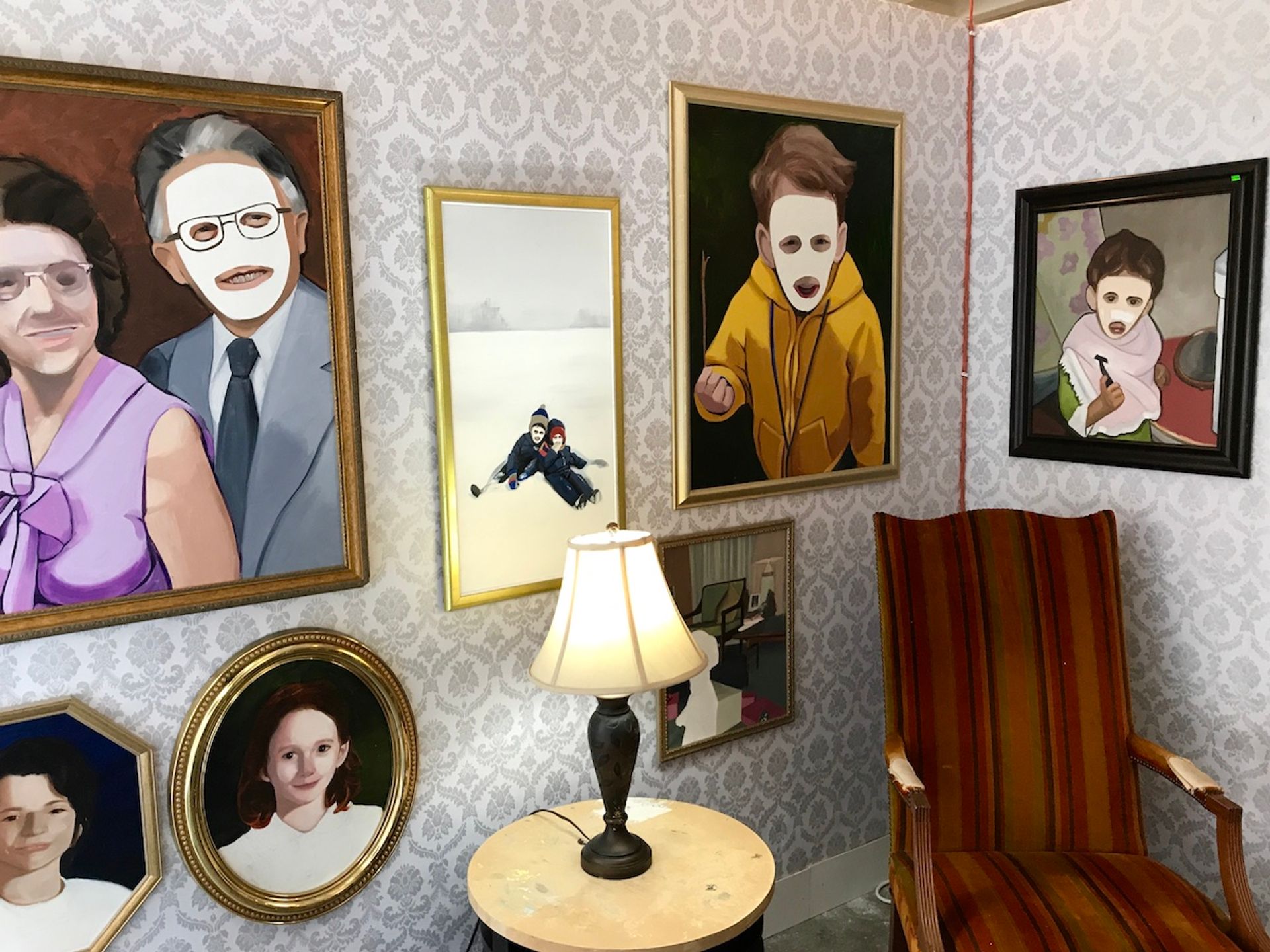
The Virginia-based artist Chris Cohen created this poignant series of oil paintings as a reflection on his personal heritage. The works, based on recent and old family photographs, depicts some of the artist's relatives with a white mask around their faces, while other family members are shown naturally. The mask “symbolises something that comes down through the male side of my family in order to question whether or not this 'thing' is inherited or imagined”, says the artist. He adds that the series is "a way to point out to the other side of my family that their ideology looks like this to the outside world, whether they realise it or not”. The works range from $900 to $3,200. Chris Cohen's White Noise, 2019. Photo: John Ros.
Reflecting the speed and scale of the opioid crisis in the US, this dystopian money booth invites visitors to step inside and try to grab as many banknotes as possible within 30 seconds. The Brooklyn-based Australian artist, best-known for works of a lighter vein such as photorealistic fashion drawings, is pals with Joss Sackler, the wife of the Oxycontin heir David Sackler. Ahead of debuting the steel and glass work at the fair, the artist wrote that she spoke to Sackler and appreciated her perspective on the recent controversies around the Sackler’s funding of cultural institutions. Hendry hopes the piece, priced at $120,000, will bring about more conversations around the legal and illegal market for addictive pharmaceuticals. CJ Hendry: Drug Money, curated by John Zionos.
What to see at New York's Spring/Break Art Show
Works in the 2019 edition of the fair aim to blur the lines between reality and perception
